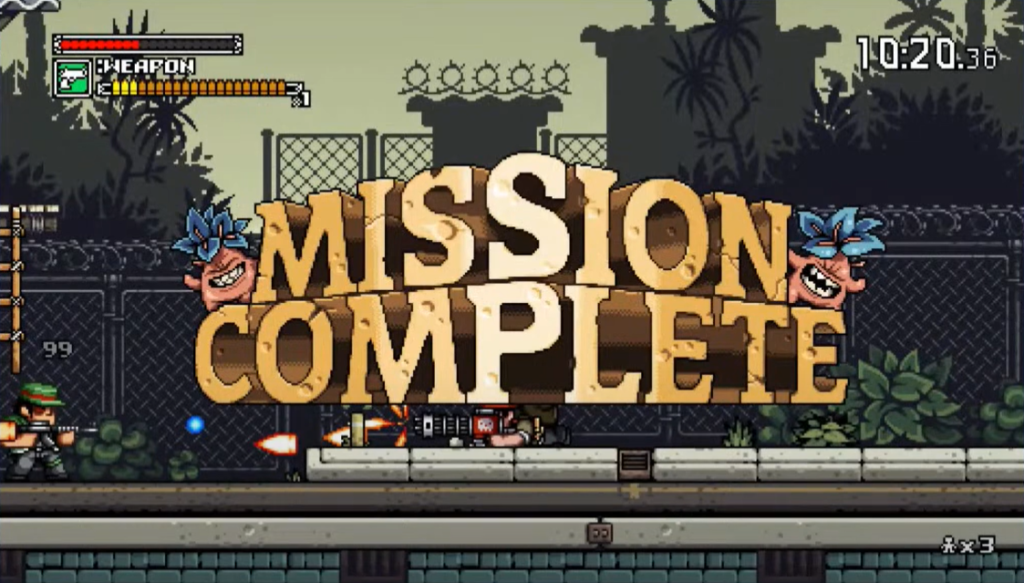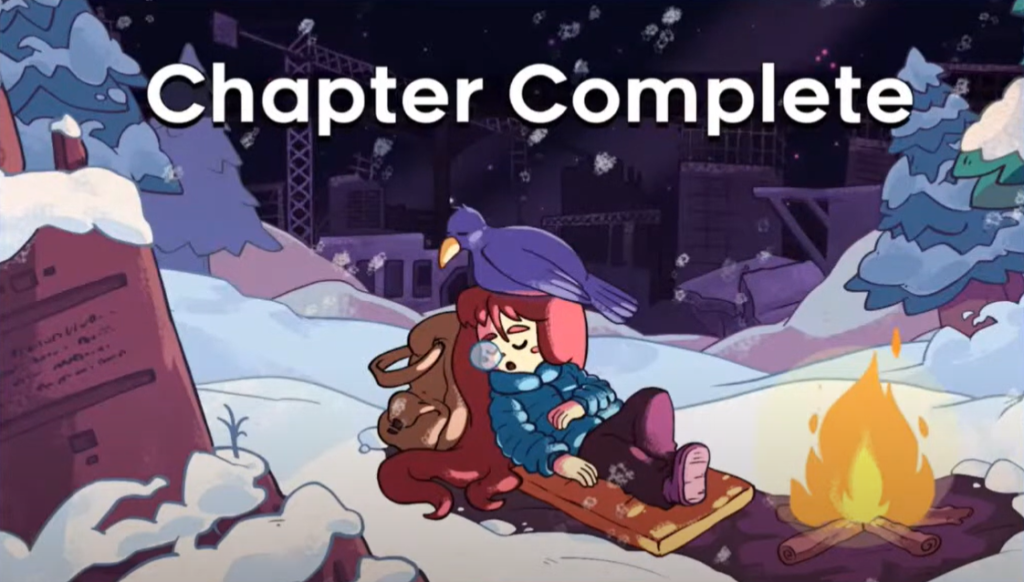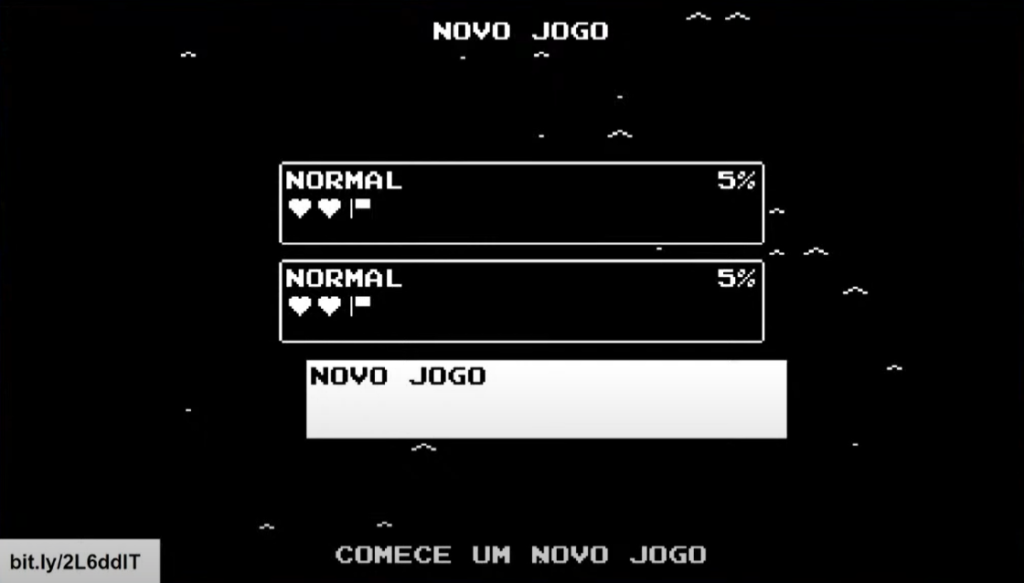
In games such as Mercenary Kings and Metal Slug, every time you get to the end of a level an epic music plays along with a nice card with very well animated letters announcing that you completed that section of the game.
The reason for that it’s because, due to social conventions, we naturally expect the moment of closure of something to be accompanied by this big celebration. It’s what happens when we have birthday or when we get promoted on the job or when we graduate at school or college. Knowing this, game developers learned how to reward the player with big visuals and music to give the sensation of accomplishment every time you finish something.
In the lecture that inspired this series of posts, game designer, programmer and producer Ygor Speranza explains that if a level ended simply by a screen fading into black or just immediately taking you to the next one it would just feel weird, like something was missing. And that’s why games generally play a fanfare and a nice cutscene when you finally manage to complete that level you’ve been playing for so long. This gives us a representation that makes clear that another part of the progress has been made.
“In our lives, we kinda expect this type of closure of things. We’ve been trained to expect this sense of closure when we finish a stage. […] And because of that, we also expect this from a game.” explains Ygor. He continues: “When it’s not present, it doesn’t please us, it doesn’t reinforce the sense of progression.”
It also doesn’t necessarily need to have a victorious tone. Sometimes, a joke to break the tension after a difficult level, like the one at the end of every Mario level (“The princess is in another castle!”, like we saw in the first post) can cause a cathartic moment of comedic tone. This can work just as much. Like everything in life, it depends on your intentions.
Besides making jokes, we can also give the player a sense of relaxation, like this one scene from Celeste:

Celeste is not exactly what you would call an easy game, so giving this card that shows the main character just sleeping after completing a hard task also works at rewarding the player with a sense of relief for finishing a level. Those feelings of relief or rest after what can feel like a long journey are also desirable sensations for those types of situations, making them another good way to represent progression.
Another remarkable game that presents a good example of representation of progress is the acclaimed Shadow of the Colossus. This is a very easy to see when you are approaching the end kind of game, because many things change, little by little, after you beat each one of the bosses. Back at the central temple where you start the game, one of the statues connected to each boss gets destroyed when you defeat it. You also cause changes in the world itself, like the pillars of light that appears at the corpses of each colossus killed, and even in the body of the main character, which is another way of showing progress, just like we learned in the previous post.
But the main thing to be noticed here are the statues at the main temple. At any given time the player can go back to the temple to check how close they are to the end by simply seeing how many statues are left. The game also makes sure you see this during the cutscenes showing the statues exploding following the death of every colossus.
Another resource commonly used to give the player a good notion of how much of the game is left is by having a percentage at the main menu, like this one in the game Minit:

There’s probably not a more direct way of showing progression than providing the player with a literal percentage of how much of the game they already completed. Some games even toy with this concept by going beyond the 100% completion and letting you complete tasks that can raise the completion rate to 110% or even 120%.
In competitive games, you can also show a leader board at the end displaying who the players who had the best scores are. This offers us a numeric progression that is both competitive and comparative, because you can see how well you are doing in the game compared to other people, and then being part of the top 10 becomes your new objective after you’ve done and seen everything there was to be done and be seen. This can greatly expand the gameplay time, since it gives the player a way for them to keep challenging themselves after they already surpassed the entire difficulty curve from the main game.
So, representation of progress is something extremely important in games. It serves not only to show you how much is left until the end of the game, but it also does wonders in providing the player with a sense of satisfaction after beating a level, finishing a story section, reaching some kind of milestone or surpassing a great challenge. The more you can stimulate this sensation of reward, the more the player will feel addicted and motivated to keep playing your game and reaching for its final objective, be it completing an epic story or managing to conquer a hard challenge, because it’s by representing it that you guarantee that this progression curve is being noticed by the people playing your game.
